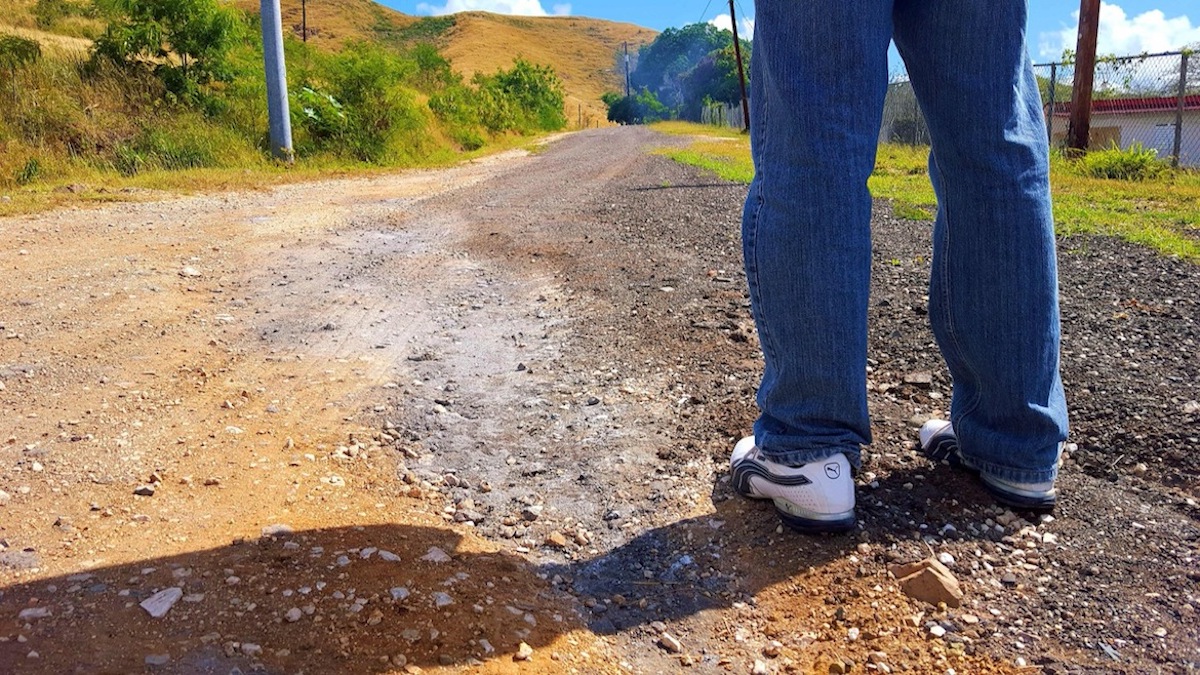

A resurgence of coal ash has occurred in Ranchos Guayama de Salinas. (Photo by Omar Alfonso | La Perla del Sur)
The following media release was shared with Latino Rebels on Monday night by the local organizers in Puerto Rico who have been protesting the actions of AES Puerto Rico.
GUAYAMA, Puerto Rico, August 20, 2019 – In addition to scientific research, such as that of the School of Public Health of the University of Puerto Rico that establishes a steady rise in diseases and deaths in Guayama due to coal burning, a new and jarring study has been released on coal ash exposed in several communities—coal ash produced by the company AES Puerto Rico. Faced with this alarming reality, the Resistance Against the Burning of Coal and Toxic Ash (RCC Resistance) group called for a demonstration in front of the AES’ Guayama coal plant on August 24 at 10 a.m. to insist on the facility’s closing.
For over a year, various communities and organizations have demanded the government and its various agencies declare a state of national emergency in the face of a serious health risk posed to the entire country by AES’ daily contamination of water, air, and soil. The government has not yet issued the declaration that would open the way to converting community claims into actions that protect public health and the quality of collective life on the island.
Earthjustice, the main nonprofit environmental law organization of public interest in the United States, strengthens these claims thanks to a new study. The scientific analysis determined that the level of arsenic, one of the most toxic elements, has been found in the ash at levels the Environmental Protection Agency (EPA) considers harmful to human health.
In the three samples analyzed and taken in the Urb. Parque Gabriela, the Ranchos Guayama community in Salinas, and the Dulces Sueños de Guayama Connector, arsenic levels range between six and 15 parts per million (ppm). These levels are nine to 22 times the EPA’s “regional detection level” for arsenic in residential soils, and two to five times the level considered “safe” for soil in industrial properties. The EPA could rely on such results to order the cleanliness of the land under the Superfund program.
The same arsenic levels could exist in 18 places in Guayama, Salinas, Arroyo and Santa Isabel, where toxic ash is exposed and located near residences, schools, hospitals, rivers, streams and well water. The same risk exists in Caguas, where leaders of the Morales de Caguas neighborhood say there is uncovered coal ash near their homes and community school. In 2007, the AES sent 2,610 tons of its ash to Caguas.
These overwhelming findings come at a time when AES, through its Caribbean region chief executive Jesús Bolinaga and operations manager Elías Sostre, deny that their operations cause damage to the environment and public health. In line with the position of the AES business, the Department of Health and the Department of Justice —before and after Ricardo Rosselló’s tenure— still have not investigated how community health claims relate to burning coal and environmental crimes of the coal company.
Puerto Ricans’ health could get worse if the EPA approves its proposed amendments to the coal combustion waste management regulation. This move would imply expanding the amount of coal ash that companies like AES could accumulate on their land. This is meant to promote the use of these pollutants as a construction landfill, and for the design of gardens and parks.
Although Earthjustice and the RCC Resistance formally requested the EPA to hold public hearings in Puerto Rico —especially in Guayama, where its residents are the most affected by the proposed actions— the federal agency ignored the petition and will only hold a public hearing in Washington, D.C..
The RCC Resistance called on the governor of Puerto Rico, Wanda Vázquez Garced, state legislators and the Department of Natural and Environmental Resources (DRNA), to be stricter than the EPA in exercising its duty to protect people’s health and lives, as well as the environment. The group also urged them to pass laws and regulations that prohibit all deposits and use of coal ash in Puerto Rico.
The communities can no longer tolerate the complicity of the government with AES for ignoring health problems of residents of coastal towns such as Humacao, Guayama, Salinas and Peñuelas, and towns in the center of the island, such as Caguas. They too no longer decide to ignore the risk to well-water quality there and in towns such as San Juan, Toa Alta, Dorado and Mayagüez, where AES toxic ash was deposited.
As the rally is slated to take place in front of the coal plant. Communities continue to demand the following:
- The immediate suspension of any negotiation of new contracts with the AES, including its new company called “Fluence.”
- Monitoring and decontamination of all areas affected by the deposit of toxic ash, including the total removal of a waste pile at the Guayama AES plant.
- The immediate closure of the coal plant in order to prioritize quality of air, water and soil, as well as the health of affected communities, over AES’ economic goals and the EPA. The government should also take part in a fair transition plan for the workers affected by this change, and
- Force AES to assume its responsibility, as an environmental criminal enterprise, for the damage to people’s health affected by its operations. They should leave the country.
The following people will attend the rally: Dr. Gerson Jiménez, Medical Director of the Mennonite Hospital of Guayama; Dr. Obed García, President of the Committee of Public and Environmental Health, of the College of Physicians and Surgeons of Puerto Rico; Dr. Víctor Ramos, President of the College of Physicians and Surgeons of Puerto Rico; and representatives of workers’ and workers’ organizations.


